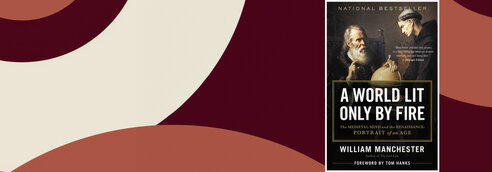The article mentions Erasmus several times. Who was he? What influence did he have on later movements, especially the Enlightenment? How are his ideas reflected in mainstream ideas about religious toleration today?
Have students learn more about Erasmus by watching this short video and reading this profile from Human Progress. Then, ask students to write a 1,000-word report in which they respond to the following:
• Briefly summarize Erasmus’ life and career.
• Describe the historical context. What significant events were occurring in Western Europe during the period that affected his life experience?
• What were the causes of Erasmus’ pleas for religious toleration?
• What effects did the thinking of Erasmus have on the Enlightenment?
• How do his ideas on tolerance continue to impact American society and institutions in the 21st century?
• How does Erasmus’s outlook represent a historical change from the prevalent views on religion during his lifetime?
• Compare Erasmus’s ideas about religious toleration with those of a prominent non‐Western leader during the 1500s. For example, Akbar the Great, Suleiman the Magnificent, or Shah Ismail I. What was similar about Erasmus’ views and the religious policies of these men? What was different?
CREATE YOUR OWN CONSPIRACY THEORY
The article refers to a calendar from Mainz, Germany, “which designated the best astrological times for bloodletting.”
Bloodletting—the practice of withdrawing blood from a person’s veins for therapeutic reasons—has been common for thousands of years and was popular well into the 19th century. Today, however, it is a discredited practice widely known to harm the patient.
The Mainz calendar supports a pseudoscientific theory. It may be compared to false advertising or even a conspiracy theory. Take a close look at this bizarre calendar.
There are many contemporary conspiracy theories. Some are dangerous and foment and spread anti‐Semitic, racist ideologies, while others are amusing and innocent. For example, the Voice of America writes that “despite the huge amount of evidence, the dust and rock samples, the television footage, and the hundreds of thousands of people who made it happen, polls show as many as 6% of Americans believe the Apollo 11 astronauts never landed on the moon.”
The US National Archives maintains an Online Exhibits page with thousands of authentic images and stories documenting American life. Have students peruse the site and select
an exhibit to explore. Some enticing examples include “When Nixon Met Elvis” and “The Herbert Hoover Galleries.”
STUDENTS’ TASK
Have students make a Google Presentation in which they create a plausible conspiracy theory using genuine material from the National Archives site.
Their presentation must include at least 5 slides. Each slide must have at least 5 sentences and at least 1 image.
For the text, tell students to be creative and include details about the personalities involved and their supposed motives. Have them imaginatively link seemingly disconnected events to each other in entertaining ways. Students may only use images from the National Archives Online Exhibits.
Students should not include any information that targets a specific group or encourages discriminatory attitudes and should keep it light and amusing.

